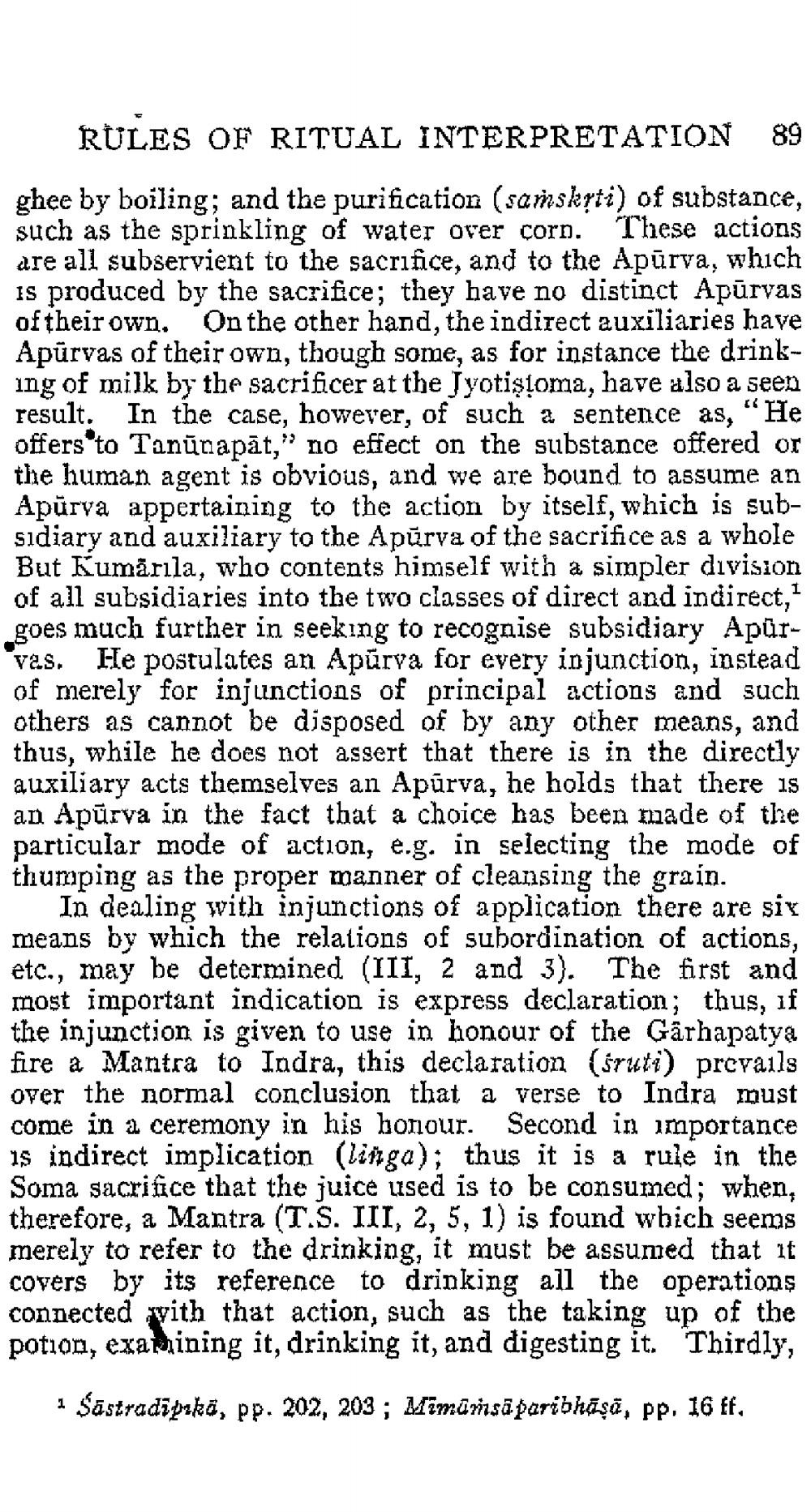________________
RULES OF RITUAL INTERPRETATION 89
ghee by boiling; and the purification (sanskrti) of substance, such as the sprinkling of water over corn. These actions are all subservient to the sacrifice, and to the Apūrva, which is produced by the sacrifice; they have no distinct Apūrvas of their own. On the other hand, the indirect auxiliaries have Apūrvas of their own, though some, as for instance the drinking of milk by the sacrificer at the Jyotistoma, have also a seen result. In the case, however, of such a sentence as, “He offers to Tanūnapāt," no effect on the substance offered or the human agent is obvious, and we are bound to assume an Apūrva appertaining to the action by itself, which is subsidiary and auxiliary to the Apūrva of the sacrifice as a whole But Kumārila, who contents himself with a simpler division of all subsidiaries into the two classes of direct and indirect, goes much further in seeking to recognise subsidiary Apurvas. He postulates an Apūrva for every injunction, instead of merely for injunctions of principal actions and such others as cannot be disposed of by any other means, and thus, while he does not assert that there is in the directly auxiliary acts themselves an Apūrva, he holds that there is an Apūrva in the fact that a choice has been made of the particular mode of action, e.g. in selecting the mode of thumping as the proper manner of cleansing the grain.
In dealing with injunctions of application there are six means by which the relations of subordination of actions, etc., may be determined (III, 2 and 3). The first and most important indication is express declaration; thus, if the injunction is given to use in honour of the Gärhapatya fire a Mantra to Indra, this declaration fruti) prevails over the normal conclusion that a verse to Indra must come in a ceremony in his honour. Second in importance is indirect implication (linga); thus it is a rule in the Soma sacrifice that the juice used is to be consumed; when, therefore, a Mantra (T.S. III, 2, 5, 1) is found wbich seems merely to refer to the drinking, it must be assumed that it covers by its reference to drinking all the operations connected vith that action, such as the taking up of the potion, examining it, drinking it, and digesting it. Thirdly,
1 Šāstradăpıkä, pp. 202, 203 ; Mēmāṁsā paribhāṣā, pp. 16 ff,




